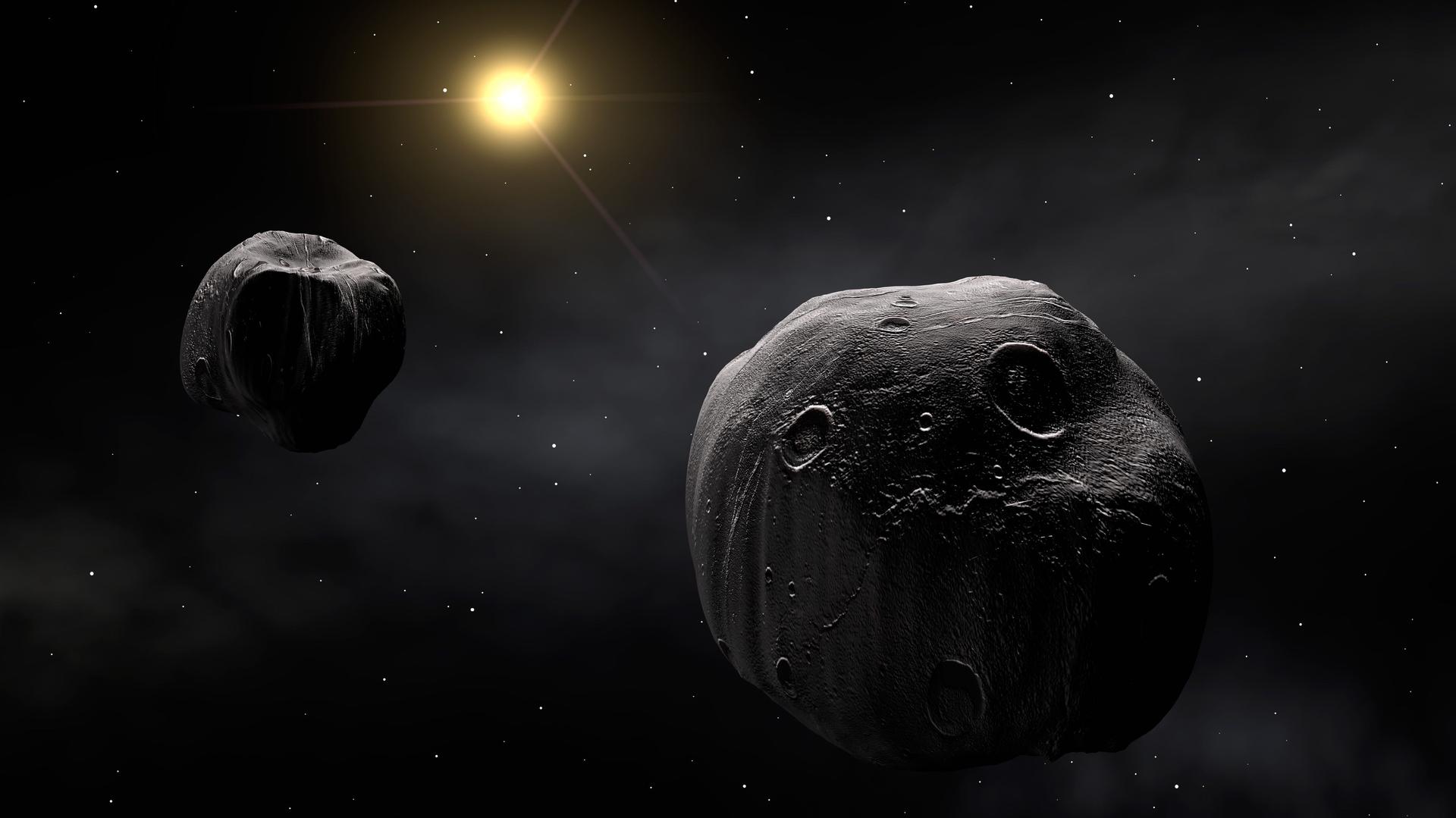‘Asteroid hunters’ search for space rocks that could collide with Earth
This is an artist's impression of the double asteroid 90 Antiope.
Millions of rocky and metallic leftovers from the formation of the universe orbit the same sun that we do, many of them found between Mars and Jupiter in what is known as the asteroid belt. And while most of these asteroids peacefully coexist with planet Earth, some of them end up on more hostile trajectories.
It may be terrifying to think that an asteroid could collide with Earth at any moment, but some of our planet's citizens have a plan for dealing with hazardous space rocks.
Dr. Carrie Nugent and her scientist colleagues are known colloquially as "asteroid hunters." She's devoted so much of her life to mapping the asteroids in our universe that she's even helped name a few.
“We named one after Sojourner Truth — that has the number 249521,” she says. “We named one after Harriet Tubman and one after Rosa Parks. And that's really delightful, and I'm happy we can honor them in this small, slightly obscure way.”
There are still plenty of asteroids yet to name. To date, Dr. Nugent and her team have mapped out 25 percent of the asteroids that would cause major damage if they were to ram into Earth. Though the still-unknown 75 percent may sound daunting to the nonscientists among us, Dr. Nugent's research has led her to conclude that asteroids don’t necessarily mean Earth-threatening natural disasters.
“The very interesting thing about asteroids is that their paths are very predictable around the sun,” says Dr. Nugent, a staff scientist at the California Institute of Technology's Infrared Processing and Analysis Center and author of the new book "Asteroid Hunters." “It’s surprising to most people to learn that you can predict where an asteroid is going to be, a well-studied asteroid, every single day from now to 800 years from now.”
The system for tracking asteroids is simpler than tracking or predicting earthquakes, volcanic eruptions or hurricanes. Asteroids don’t change their orbits very quickly — at least when considering human timescales — which has allowed scientists like Dr. Nugent to map these objects sometimes hundreds of years into the future.
“Near-Earth objects are usually what a lot of people are really interested in because those are the ones that get close to us,” Dr. Nugent says. “Near-Earth objects have kind of three fates: They can end up hitting a planet, they can end up hitting the sun or they can end up getting ejected from the solar system entirely.”
At least for the next few hundred years, there are no known asteroids that currently have an impact trajectory towards Earth.
“What we’re really doing now is searching for things that may get close to Earth, but nothing known is going to get close,” says Dr. Nugent.
On the whole, asteroids contain a great deal of information about the earliest days of the solar system. By studying these objects, scientists can glean important information about what the cosmos were like before the solar system had planets.
If an asteroid were ever careening towards Earth, the human response would have to vary based on the object, Dr. Nugent says.
“Asteroids are really different, some are made out of rock, some are made out of metal. And they have different physical properties — some spin incredibly quickly and can make a full rotation in 20 seconds, which is amazing for something that is tens of meters across. Some spin very slowly, and so your exact response would definitely want to be tailored to the scenario,” she says. “And that’s why we’re looking now. We’d want to give ourselves as much lead time as possible if it does happen that there is something headed towards us.”
Some small asteroids have crashed into Earth before. One such asteroid was 2008 TC3, which was 80 metric tons and about 13 feet long. The asteroid, which was discovered by the Catalina Sky Survey, crashed into northern Sudan’s Nubian desert on Oct. 6, 2008.
“That was really exciting because it was discovered, it was tracked, and the impact location was predicted with enough time to warn the government of the Sudan, and also to give a heads up to a couple of pilots flying an airliner, and they were able to divert and actually watch it go down, which is pretty cool,” says Dr. Nugent. “That was a very small asteroid, there was no threat of injury to anybody, and so that asteroid broke up, it had a beautiful explosion, and then some scientists went down and later collected meteorite samples of it, which was really exciting. That was the very first time we were able to compare meteorites that we could hold in our hand to what we saw out in space.”
This story originally aired on PRI's The Takeaway.
